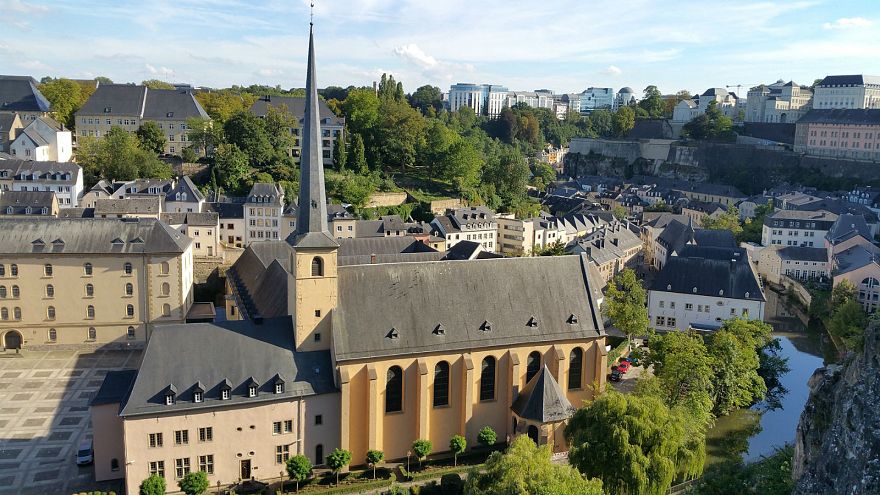
Photograph by Kevork Djansezian / Getty Images
Last
week, Metro CEO Phil Washington endorsed a bold proposal: implement
congestion tolls on drivers to make public transportation free. If the
proposal moves forward, it would fit into a number of projects Metro has
in the works, which all aim to turn Los Angeles into a seamless public
transportation utopia
before the Olympics come to town.
“We
think that with congestion pricing done right, we can be the only city
in the world to offer free transit service in time for the 2028
Olympics,”
Curbed reports Washington said during
his presentation to the Metro Board of Directors.
Washington
presented three possible approaches to establishing a congestion
pricing scheme. Cordon pricing would create a perimeter around a
particular location, and charge dynamically fluctuating prices to cross
the border. This system, similar to the congestion fees that have been
charged to enter central London since 2003, would generate an estimated
$12 billion a year, according to Metro. There’s also corridor pricing,
which would identify certain high-traffic roads and set up something
kind of like the existing Express Lanes system, but which would apply to
every lane, not just the express. This plan, which could net $52
billion, would only be used on roads where there is a “viable public
transit alternative.”
The third option, which could generate 103.5
billion dollars, would be VMT Pricing. VMT stands for “vehicle miles
traveled.” Drivers could go on any route they liked, and an in-car
tracking device would log the miles, which could be billed at a flat or
dynamic per-mile cost. VMT fee systems have been adopted in a number of
European nations, but primarily for commercial truck drivers, rather
than passenger cars, though a 2007 pilot study in Oregon
deemed the idea of a VMT fee “feasible.”
While
it appears to have the greatest upside for Metro’s coffers, rolling out
a VMT fee could be the most difficult, as it would require the
development and adoption of a technology solution by every participating
driver, and questions have been raised
over privacy concerns
regarding what would be done with all that data being collected.
Depending on how it was implemented, it could also only end up charging
local drivers who have the on-board device, and not charging visitors in
town for something like, say, the Olympics.
"The theory goes that, as driving becomes
more expensive, fewer people will choose that as their way to get
around, particularly if public transportation alternatives are free and
accessible."
At the presentation,
Washington expressed that the corridor pricing model would be his first
choice, and that his idea would be for public transit alternatives to
driving to be free of charge, both during the Olympics and indefinitely
afterwards, subsidized in part by revenue from the congestion fees.
StreetsBlog L.A. commentator
Joe Linton suggests that bringing up the congestion pricing proposal
may be something of a negotiating tactic by a cash-strapped Metro that
has been asked to speed up a lot of work in time for 2028. “Asked to
fund ’28 by 2028,’ Washington turned around and put things back in the
board’s lap,”
Linton writes.
“He basically said if you want acceleration, you have to do something
bold. He and his staff then tossed the proverbial bunch of spaghetti on
the wall to see what would stick.”
Then again, compared to the
other “spaghetti” Washington tossed out, congestion pricing starts to
make sense. Other funding options would include requesting federal
money, which Donald Trump is against; delaying electric buses, which
Mayor Eric Garcetti is against; selling naming rights to stations, which
County Supervisor Sheila Kuehl is against; cities handing their Measure
M funds over to Metro, which the cities are against; or borrowing more
money, which the Metro Board is against.
Finding the budget to
cover Olympics-related projects is also only the short-term goal.
Congestion pricing could be a stab at some big ideas, including cutting
back on pollution to slow climate change and making a meaningful
reduction to L.A.’s traffic. The theory goes that, as driving becomes
more expensive, fewer people will choose that as their way to get
around, particularly if public transportation alternatives are free and
accessible.
 Bettel, (pictured) who took office for a second term on Wednesday, made environmental protection a key part of his election campaign.
Bettel, (pictured) who took office for a second term on Wednesday, made environmental protection a key part of his election campaign.
